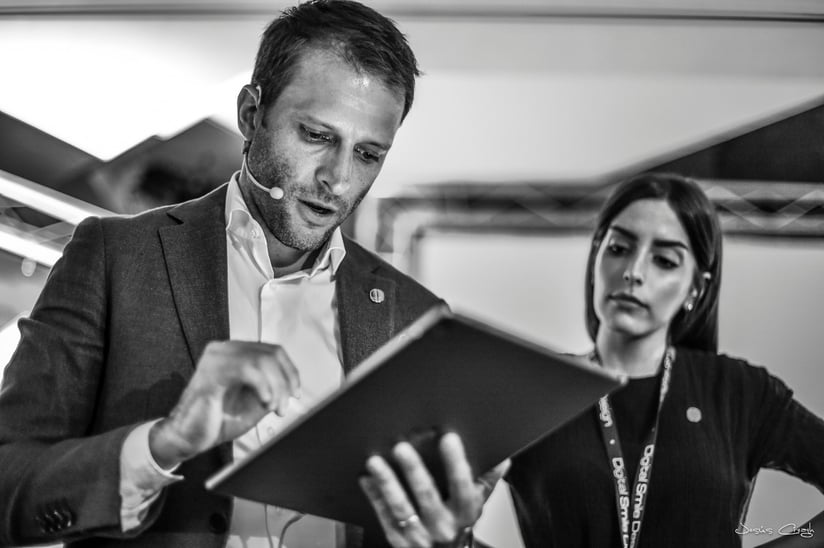What every dentist needs to relearn about artificial esthetics
The human brain is wired to appreciate the beauty of nature. Nature has always been an inspiration to humans who try to create beautiful things themselves. For the whole of history, we've been trying to learn how to reproduce nature with our hands through paintings, sculptures, music, literature, dance, the list goes on. It takes a very specific skill to paint beautiful portraits of people while trying to make them look as realistic as possible. In this pursuit to capture nature, humans have looked for clues, rules, and identified golden proportions that make the artistic replicas look believable.
Restorative dentistry has always been on that same search; trying to understand and learn natural tooth morphology, to learn smile design principles and esthetic parameters, facial proportions, and oral facial integration from the esthetic point of view. Trying to learn these principles means being able to reproduce them and training our eyes to visualise these principles. As we know, we can only reproduce with our hands what we see with our eyes. When I mention seeing with our eyes, I’m referring to beyond just looking and watching. It's really about training our brain to see beauty, to see things in three dimensions.
An artistic person and a non-artistic person can look at the same object and the artistic person will be processing this image in a completely different way in their brain compared to the non-artistic person. That's why the artistic person has a bigger chance at reproducing with their own hands a sculpture that looks more like what you see. The non-artistic person, whilst looking at the same object, will not be able to translate this into a sculpture.
The skills of an artist is not in the hands, but in the ability to see things.
The challenges of reproducing nature
The major challenge of every dental technician and every restorative dentist is to try to reproduce nature. Very few top artists can do that, so too very few top technicians and top dentists. We've been fabricating smiles for many decades with our own hands, technicians and dentists fabricating restorations and dentures, trying their best, but because of the challenges, the huge majority of every smile is not actually ‘natural’. Even top technicians and top dentists struggle with this. It's not every day that we are completely inspired and ready to do something that looks natural. So most of the patients out there are receiving dental work that is not completely natural. I believe this happens due to the process that is followed.

Understanding beauty lies in perfect imperfections
The beginning of this journey starts with the humble assessment of accepting that we don't have nature under control; that it's very hard to reproduce nature. Now, because we've been delivering restorative work that is not entirely ‘natural’ our brains and eyes have become used to seeing hand-made restorations and saying, ‘wow, this is beautiful’. We have lost the perception of natural beauty. We lost the connection with natural beauty and we have become used to unnatural beauty. This is of course shared with the patients. And this doesn’t only occur in dentistry, it happens in plastic surgery as well. As a result, patients can completely lose their reference of natural beauty and start asking doctors to do really un-esthetic surgery. Their vision is so distorted that they believe they are looking more beautiful.
We have started to destroy natural-looking smiles, substituting them with unnatural looking smiles in the name of esthetic dentistry. We need to re-educate ourselves. We need to define natural beauty. And we need to start teaching people to appreciate natural beauty.
As I learned from Paulo Coelho who learned from others, appreciating natural beauty is about appreciating the imperfections of nature that generate the most beautiful things; asymmetry, the balance between distortions and asymmetries that generate beautiful designs. We should be seeking natural balance, natural beauty, to blend in with the whole body. That is perfectly imperfect, perfectly asymmetric.
Working towards nature not artificial perfection
We first have to admit that esthetic dentistry doesn't have smile esthetics under control. We are deviating from where we should be going. We need to re-educate ourselves, reset our brains, relearn what is natural morphology, natural smile design and natural facial integration. I believe we should give value to what is there already; the beautiful natural imperfections and only change people’s smiles when we can make an improvement from the natural esthetic point of view. We should only suggest changes when we really need to and when the patient really deserves a new smile. We should be working towards nature, not towards artificial perfection.
Being humble as digital smile designers
We've become used to seeing the work from our great dental technicians (I’m speaking as a technician as well) and saying it is beautiful. Now, if we do this humble exercise of comparing our beautiful handmade work with natural-looking teeth, what would we see? I'm not criticising our work, I'm not criticising what we've been doing, I'm just trying to create awareness of how we can make it even better.
I'm proud of what I did in the past as a technician, as a dentist and I'm proud of dentistry. I just think that with this new approach and understanding we can do even better.
Our vision is so influenced and so biased that we start saying handmade is better than naturally made. Of course there are smiles that require esthetic intervention. There are smiles that really need help, but again we need to train our brains to look at the natural teeth and appreciate their beauty. We need to look at a natural smile. We need to understand that sometimes with simple procedures, simple alignment, simple bleaching, simple gingivoplasty, we can save enamel and save teeth. We can keep that signature of nature and improve smiles without having to cover everything with artificial veneers.
Before and after cases on social media
Today on social media we see huge amounts of before and after presentations of cases, where the ‘before’ stage had very decent natural teeth that needed minimal invasive dentistry. Then the ‘after’ stage has teeth covered with veneers and crowns, mainly because the Western world is on that search for perfection and fast solutions. Yet the natural imperfections of the ‘before’ is often better than the perfect looking ‘after’. In many cases like this, simple modifications in the ‘before’ could have generated a much healthier ‘after’, rather than going for aggressive full mouth or full upper esthetic restorations.
As professionals we have lost the perception of beautiful natural facial esthetics and we are distorting facial procedures. We have lost sight of oral facial integration and we are creating non-natural oral facial integrations. We have lost the perception of natural texture, tooth texture, and we are creating textures in our restorations that simply don't exist in nature. I believe that when it comes to shapes, texture, arrangement, proportions, harmony and integration we should go back to nature. We should relearn.
Smile design technology taking us back to nature
That's where smile design technology comes in and that was the paradigm shift for me. When I started the journey of Digital Smile Design technology and understanding that with technology I can scan nature and copy-paste and use that beautiful information in my patients’ restorations. We can reproduce nature to a point where today, in almost 90% of our cases, we don't rely on handmade anterior restorations or computer suggested restorations. We just scan nature and use the infinite library of natural shapes and natural arrangements that we can copy and paste into the patients’ mouth for a customised harmonious integration. The outcome? A completely individualised and entirely natural-looking result.
Smile design technology democratises natural-looking smiles. It allows more dentists to deliver more natural smiles to more patients, because the number of technicians that can actually reproduce nature or get close to nature, are very few. These technicians are also very expensive, so very few patients can afford this treatment. Esthetic dentistry today is not democratic; it's not fair, and that's why I love the fact that with technology we can serve many more patients. This is what we call ‘natural restorations’.
Copying natural algorithms
Natural restorations have natural algorithms. Often when we are comparing real natural shapes that were manufactured by technology by scanning nature, to the ones we did with our own hands, we see that as technicians we often overdo the texture, creating unrealistic texture, creating shapes that don't exist in nature, creating arrangements and relationships between the teeth that don't exist in nature.
Our brains have become used to this and we have a tendency to say that the artificial version is more beautiful.
We think the natural texture is less than ideal, when in fact it is the correct one. It's just that we don't understand natural looking teeth anymore.
Re-educating dentists and patients
It was an amazing experience for me once we started with the natural restoration concept and used the natural files and began to re-educate our eyes and our brains to appreciate nature, to see the difference. Secondly, it was incredible to see the impact this had on the patients. How they naturally started to understand the difference between handmade and nature copied. It’s profound to see how, with a bit of practice, our eyes begin to appreciate nature. So when we use natural files for every smile design, every mock up, every provisional, every restoration, every veneer, crown, bridges, dentures, they all look beautiful!
Artificial stands out
Once you are more attuned to natural restorations, you can usually tell that someone has had 6 veneers placed from the other side of the street. Why? Artificial stands out.
We should understand that the more teeth we do, the bigger the defect, the more difficult it is to make it look natural. We should understand that we need to focus much more on training ourselves in the principles that make big cases look natural. The funny thing is as technicians, in our training process we spend 99% of the time focused on how to get better with the colour and not enough focusing on how to create better natural overall designs that integrate with faces. So we need to completely change the educational process, but first we need to accept that the single central is not the most difficult case in restorative dentistry. The bigger the case gets, the more difficult it is to make the rehabilitation blend in.
That’s the true art of dentistry: creating natural beauty in imperfection using Digital Smile Design technology.
To find out more about how DSD can help you to rediscover the natural beauty in your patients’ smiles, attend a DSD Residency near you:


.png?width=797&name=Image_12%20(1).png)

